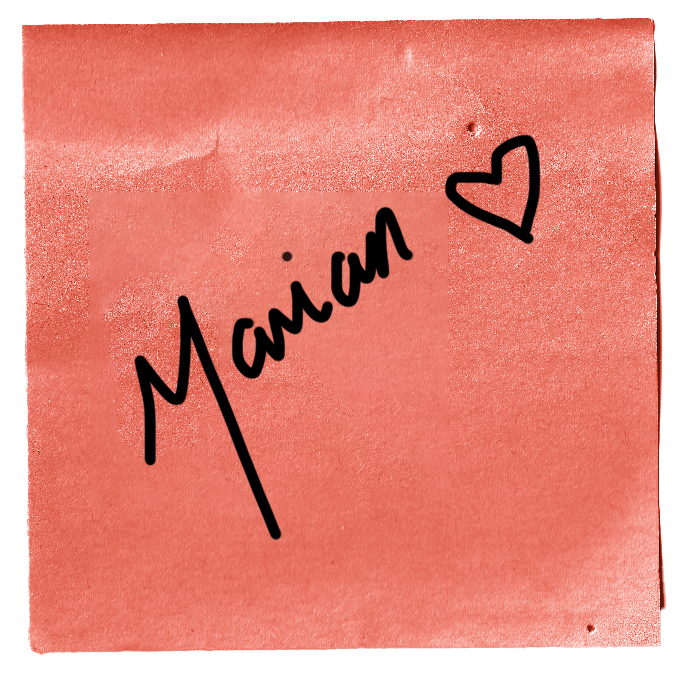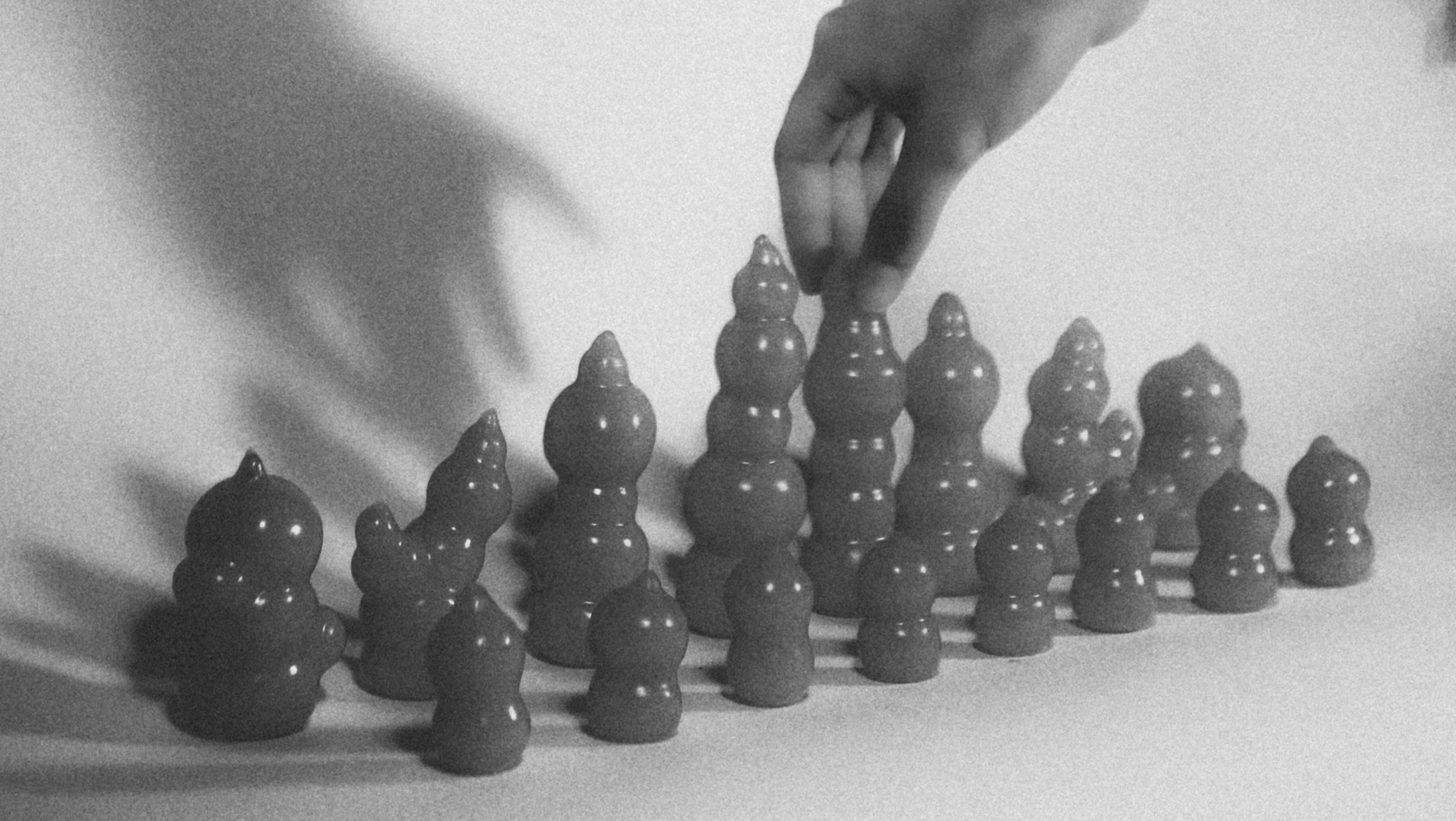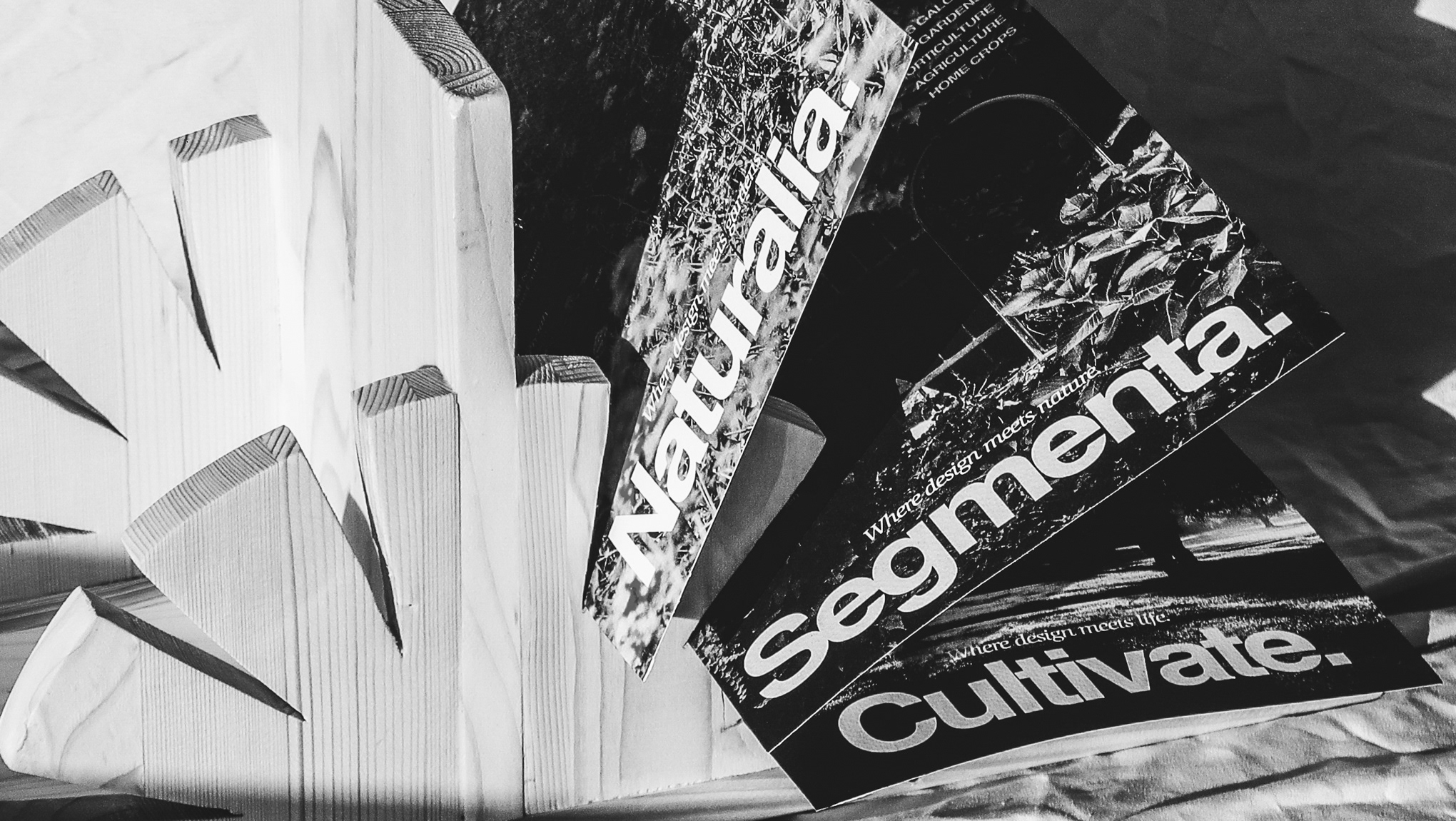In the present world, nostalgia-driven consumerism has ignited a need to satisfy yearnings for the past, offering consumers just enough to buy but not enough to truly fulfill their cravings. This perpetual cycle has led to a society that consumes based on a constant yearning for the past, leaving it in a state of stagnation in both social and creative mediums. Through a speculative scenario set 20 years in the future, a society forced to live solely in the present emerges, devoid of disturbance from the past or future, as a means to move away from this yearning. This results in a short-term society where memories expire after just two weeks, aimed at eradicating nostalgic thoughts. This short-term lifestyle can be seen in various realms, including the design process. Design no longer prioritizes quality but rather speed, leading to a critique of the decline in well-thought-out design. The rush to think, design, and market lowers the quality of products, generating a society that no longer yearns for the past but instead craves fast innovation.
AN AGING SOCIETY;
Older generations have grown tired of the perpetual past that has been rained upon them. The incessant need producers have to reel the user in by using the past has started to ignite a stagnation in creativity and societal advancement. Conclusions have been reached that read along the lines of: “No innovation comes from constantly using the past.” Millennials, Gen X and Baby Boomers have all taken radical measures in 2044 to ban nostalgia and its triggers due to the societal negative tone that has been now implicated by older generations, who happen to be the major part of society.
NOSTALGIA BAN

A SHORT-TERM SOCIETY, ERADICATING LONG-TERM:
THE WHY AND THE WHO.
Through a speculative scenario set 20 years in the future, a society forced to live solely in the present emerges, devoid of disturbance from the past or future, as a means to move away from this yearning.
This results in a short-term society where memories expire after just two weeks, aimed at eradicating nostalgic thoughts.
If we view time as a bubble where memories pass by. We can narrow down nostalgia into three simple terms. The present time bubble, which spans for 2 weeks. During our life our actions generate an impact inside our present bubble, sometimes the impact is minimal and after the 2-week period they leave the bubble and move to the past, these are short-term memories. Memories that are basically disposable. Other memories have a stronger impact in the bubble, this happens because they linger past the two-week period due to factors like repeated exposure or deep sentimental attachment. These memories are called long-term memories and often become nostalgic memories whenever triggered by anything among the realms of smell, sense, sight or touch. To enforce the ban, long-term must be erradicated from society.
This short-term lifestyle can be seen in various realms, including the design process.
(As seen below.)
BLINK DESIGN, A NEW METHODOLOGY.
In the whirlwind of Blink Design’s short-term design process, efficiency reigns supreme. With strict time management, projects are confined to two-week spans, with each page of the sketchbook allotted a mere minute for brainstorming. Utilizing quick references and moodboards within the time frame, prototypes are swiftly developed without extensive research, the culmination of our process; these initial prototypes are sent for production without further review, reflecting our commitment to speed and immediacy. The pivotal moment arrives in eradication, executed through various methods like fire or ink, symbolizing the ephemeral nature of our design cycle. Yet, this rapid pace prompts a critique of modern design’s decline in depth and thoughtfulness. Amidst the rush, a sobering critique emerges.
The relentless pursuit of speed compromises the depth and quality of design, fostering a society craving fast innovation over thoughtful craftsmanship.

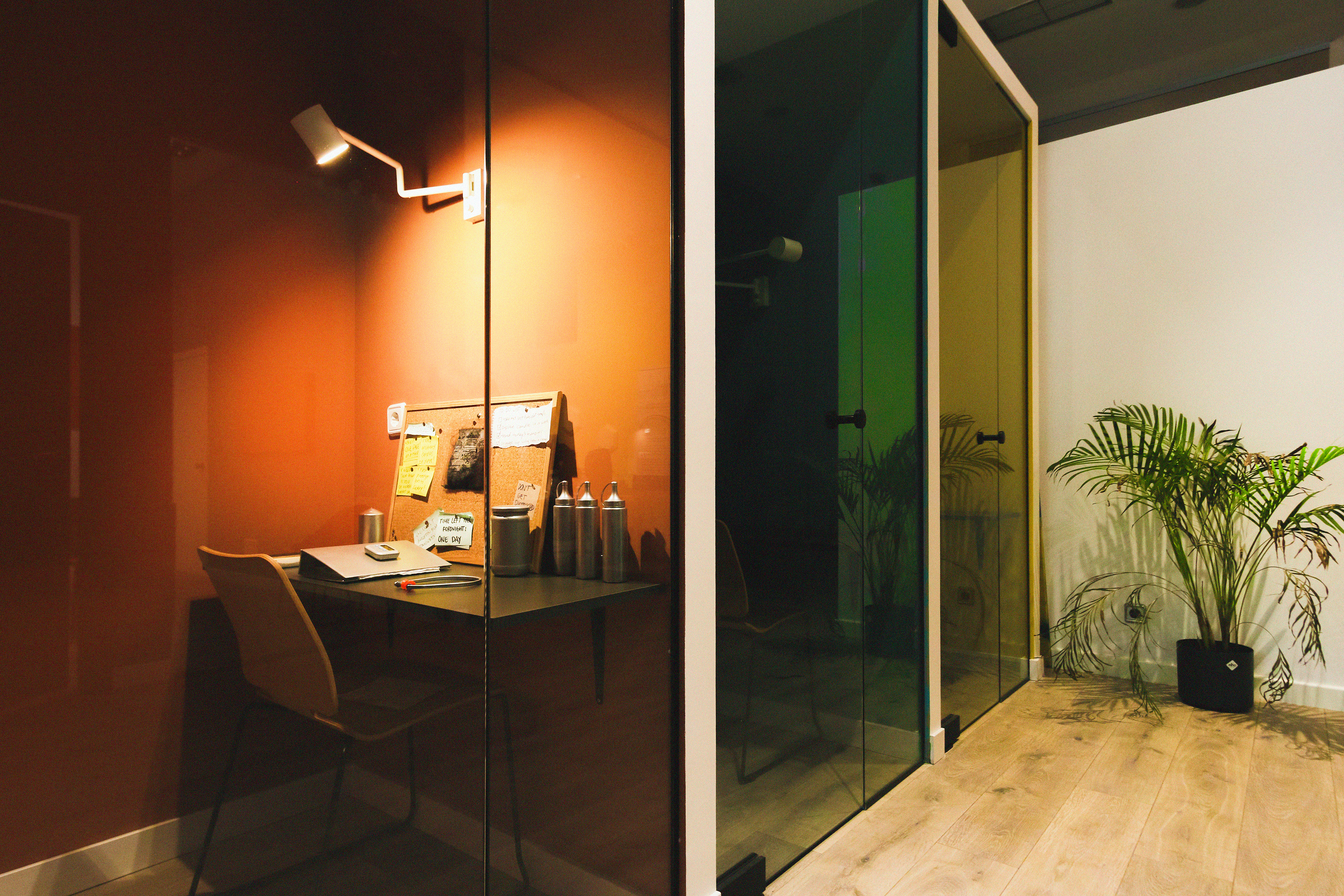


THE IGNITE SKETCHBOOK, SHORT-TERM BRAINSTORMING
7-Minute timer for under-pressure brainstorming. Lets you know when the time to eradicate comes. A fire ignition system is attached, and for it's key function... A match strike paper is in the sketchbook for easy access to the eradication process, along with the star of the Ignite Sketchbook, the nitrocellulose treated paper squares, 4 pieces sewn into four slots, to enhance the pressurized ideation by making 4 ideas per minute.
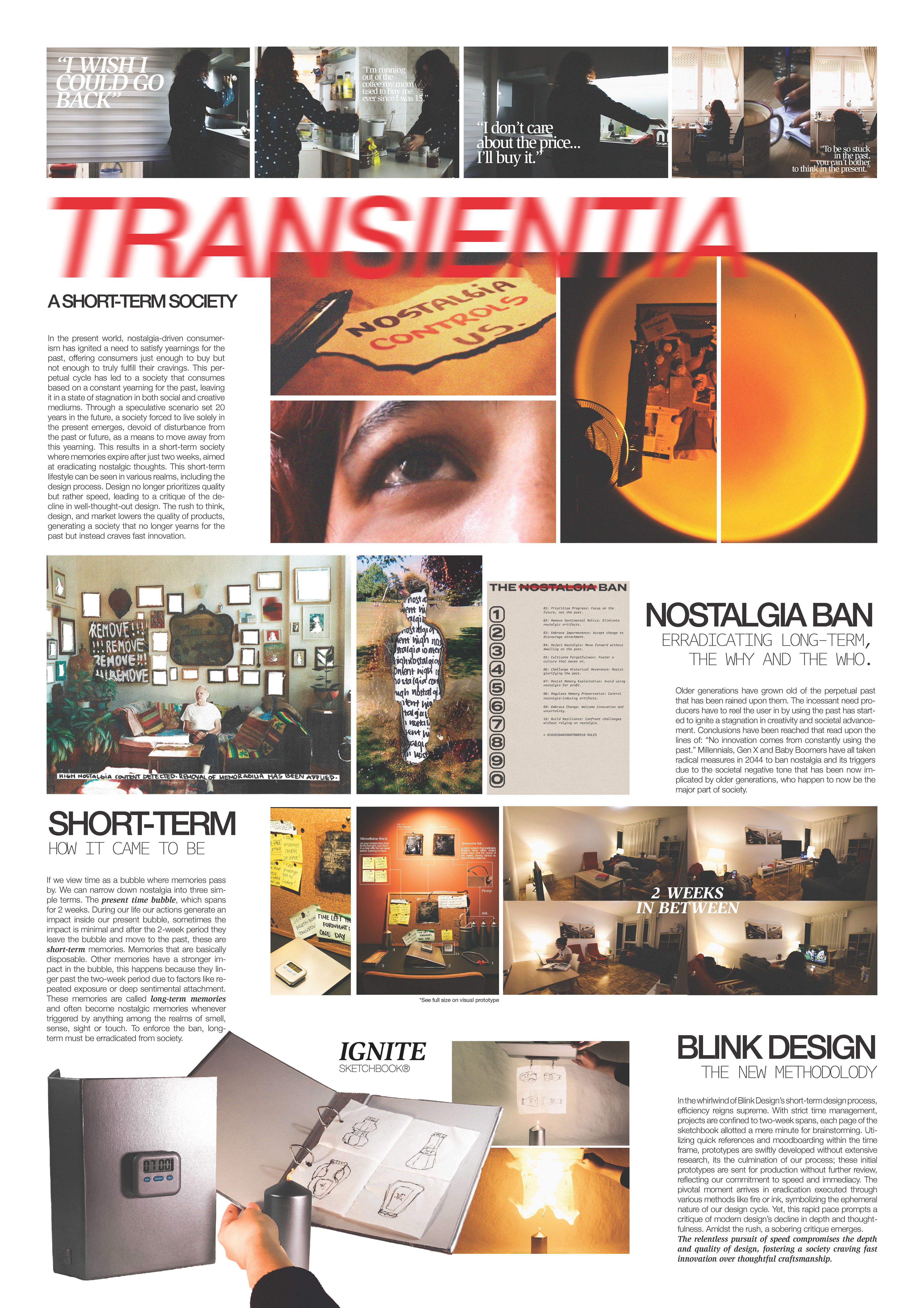
WHAT YOU NEED TO TAKE AWAY FROM TRANSIENTIA:
This project was developed in a progressive manner, and the main idea as it was broken down led me to ultimately reach the conclusions that have been presented before you. Transientia's main goal is to call out how we, as a society, have become nearsighted; we don't care about the quality of a design as long as it satisfies our immediate needs. Unfortunately, this has led to an increasing decline in well thought out design that will only worsen if light isn't shined upon it. By using this speculative design outcome as a hyperbole of what design might become if the main problems exposed are not tended to, I hope to bring awareness to those who, like myself, also find themselves in the midst of an ever-changing society.

